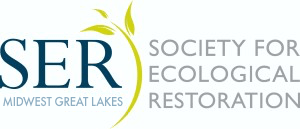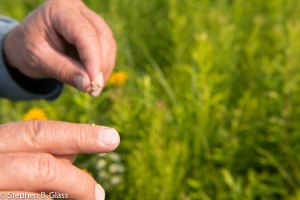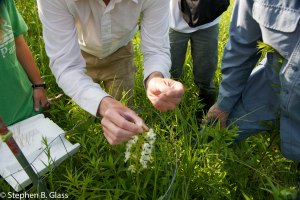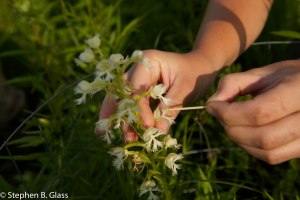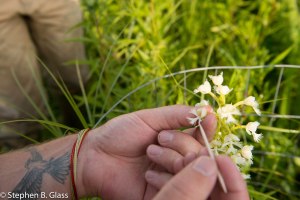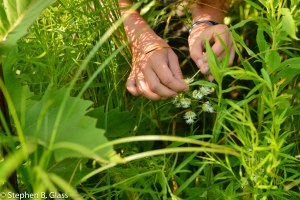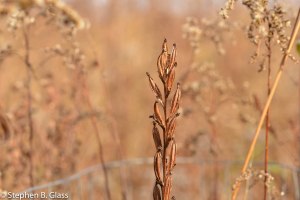Photo Essay on Restoration of Eastern Prairie Fringed Orchid in Wisconsin
by Steve Glass, The Restoration Ecology Lab
Restoration Ecology in Action
This photo sequence documents a case in which humans can be part of the solution to environmental problems. The photos illustrate how The Swamplovers Preserve near Cross Plains, Wisconsin is dedicating some of its ecological restoration work to saving the Eastern Prairie Fringed Orchid. One aim of the restoration ecologists at The Swamplovers Preserve is to make sure that the endangered orchids—some of which are naturally occurring and some of which they transplanted years earlier—are able to produce viable seed by cross pollinating the plants by hand—a tedious and fascinating task. Another key goal of the Swamplovers is to preserve and restore habitat for the orchid.
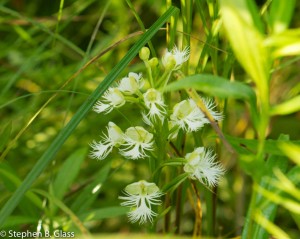
The Eastern Prairie-Fringed Orchid (Platanthera leucophaea) growing in a prairie restoration near Madison, WI
A Plant at Risk
The Eastern Prairie Fringed Orchid (Platanthera leucophae) is a Federally threatened species (United States) and is an endangered species in the state of Wisconsin. Threatened species are those that are likely to become endangered in the foreseeable future; endangered species are those that are in danger of becoming extinct.
The Eastern Prairie Fringed Orchid was added to the U.S. list of threatened and endangered species in 1989, and a recovery plan adopted in 1999. Recovery actions include protection and management of habitat, steps to increase in the size and numbers of populations, surveys of known populations, and research and review of methods and progress
Reasons for Decline
Historically, throughout the United States, the species has declined due to the loss of habitat, mainly conversion of natural habitats to cropland and pasture. Populations of the Eastern Prairie Fringed Orchid continue to decline today due to the loss of habitat from the drainage and development of wetlands. Other reasons for the current decline include succession to woody vegetation, competition from non-native species and over-collection.
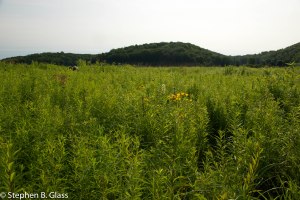
Mesic to wet-medic prairie, ideal habitat for the Eastern Prairie Fringed Orchid (Platanthera leucophaea) at The Swamp Lovers Preserve
In Wisconsin, the Eastern Prairie Fringed Orchid naturally occurs in a variety of habitats, from mesic prairie to wetlands such as sedge meadows, marsh edges, even bogs. It requires full sun for best growth and flowering and a grassy habitat with little or no woody encroachment.
Recovery Plans Include Ecological Restoration
Today, due to the efforts of the recovery plan, the orchid is surviving in protected areas and in public and private restorations where public agencies and landowners are managing the land to improve habitat. Restoration ecologists are also taking more direct action to increase the size and number of populations: they hand pollinate plants to produce seed, nurture the resulting seedlings, and then transplant those seedlings into suitable habitats.
I captured these images on a July morning at The Swamplovers Foundation, a long-term restoration project in south central Wisconsin. I followed the restoration team members around as they took a refresher course in cross-pollination, searched for flowering plants, stooped over to insert a toothpick into a flower to capture its pollen sac and then transfer the pollen to the flower of a second nearby orchid.
These steps were repeated all morning until all the flowers had been cross pollinated. I returned in November to capture images of mature seed pods (photo below.)
